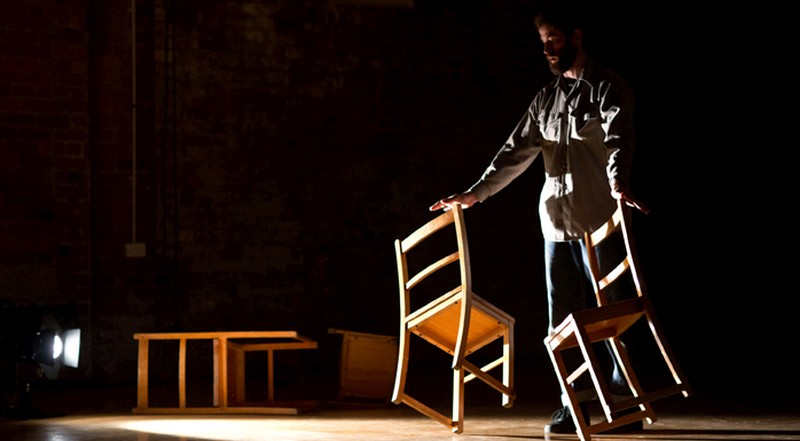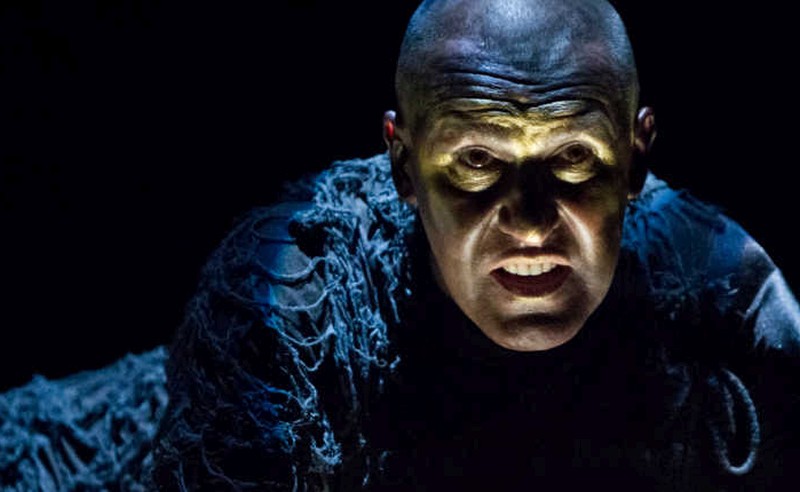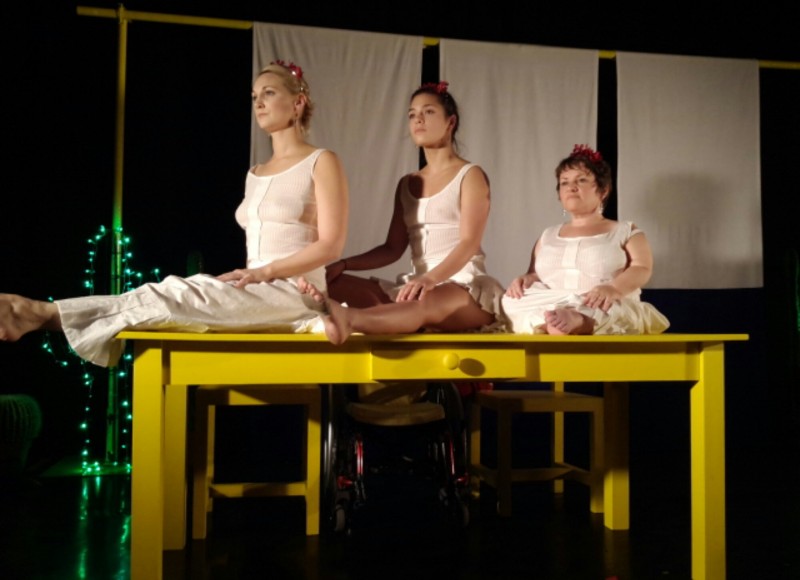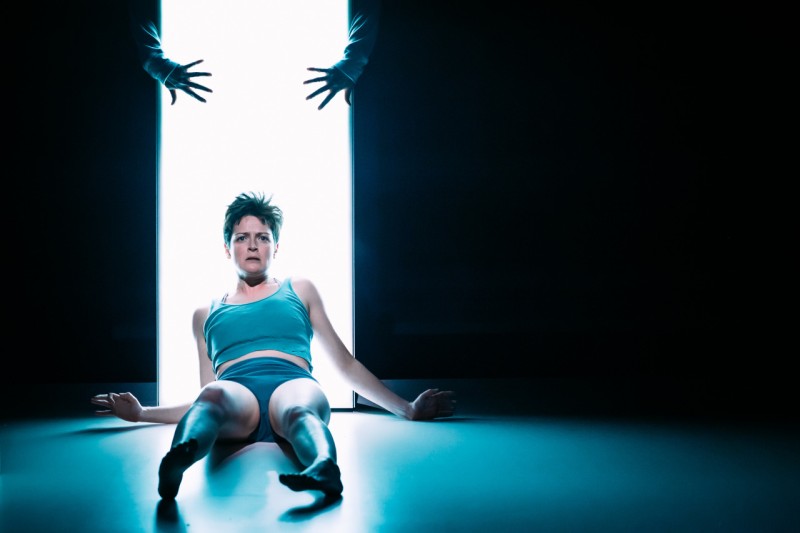 A lone man balances atop a cylindrical tube of rolled up dance floor 5ft high. He needs to concentrate – the task is ruling him. He tips forward and leaps to the ground, the tube crashing behind him. The man assesses the situation and continues to set up another balancing act.
A lone man balances atop a cylindrical tube of rolled up dance floor 5ft high. He needs to concentrate – the task is ruling him. He tips forward and leaps to the ground, the tube crashing behind him. The man assesses the situation and continues to set up another balancing act.
Douglas is a musing on realness, everyday objects, and balance. It’s an experiment in physics and a platform for choreographer and performer Robbie Synge to play. Synge sets up a series of elaborate balancing acts with chairs, rope, his dance floor, and theatre lights before crashing into them and watching them fall. Quietly humorous, it reminded me of playing with a five year old – building a precarious castle out of building blocks and whatever else you can find and then revelling in the moment of destroying it.
A rope is tied around a pole, and attached to a chair with a light on it, which in turn is attached to Synge’s body. He lets it take his weight, more, more, more; before the balance is tipped in the wrong direction and he crashes to the ground, the light and chair going with him. An impressive sequence sees Synge balance on the tube of dance floor as it slowly unravels along the stage – he needs to work so hard to remain upright as it uncurls under his body weight. He sweats and sweats as he tirelessly attempts to achieve… what exactly? The elusiveness of the piece is both a frustration and a quiet joy. Part of me is desperately seeking meaning – is the piece about the trials of everyday task and toil, the emptiness of our continued attempts to achieve bizarre goals, or the joy of accepting that life is out of our hands? Who is Douglas? A brother? A lover? Or simply an object? Unassuming and practical, Douglas offers no easy answers – just real tasks, and a canvas for you to paint your own picture.




